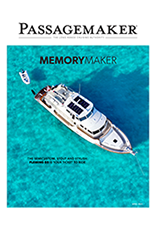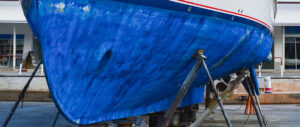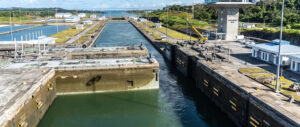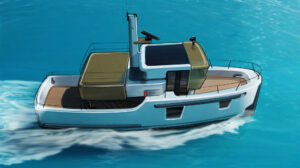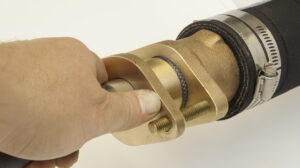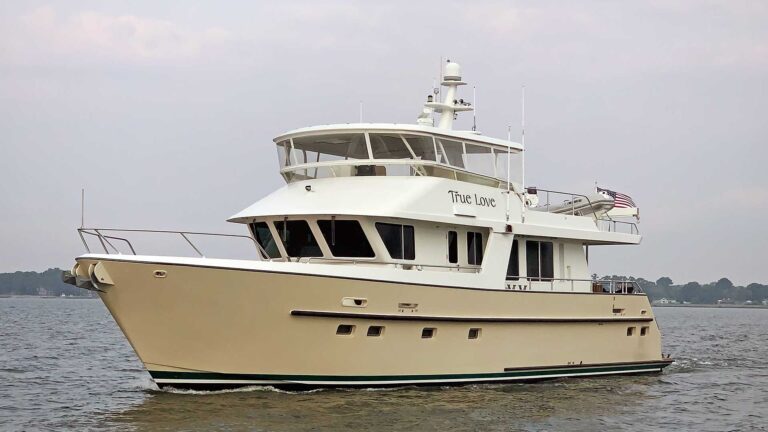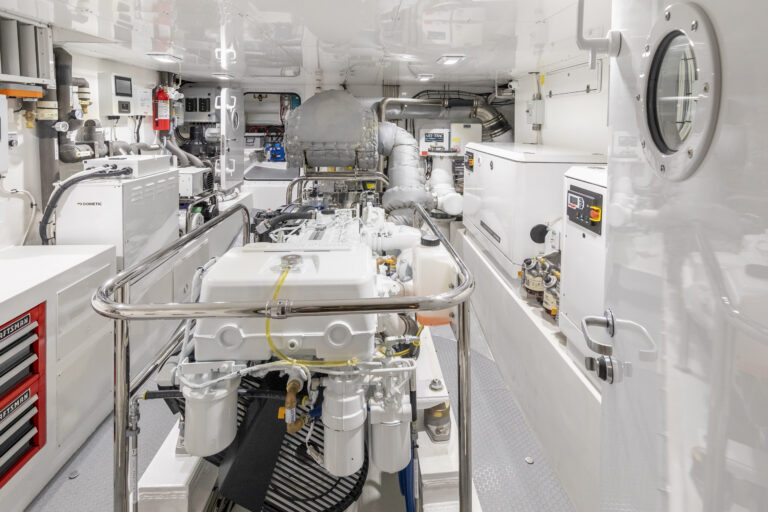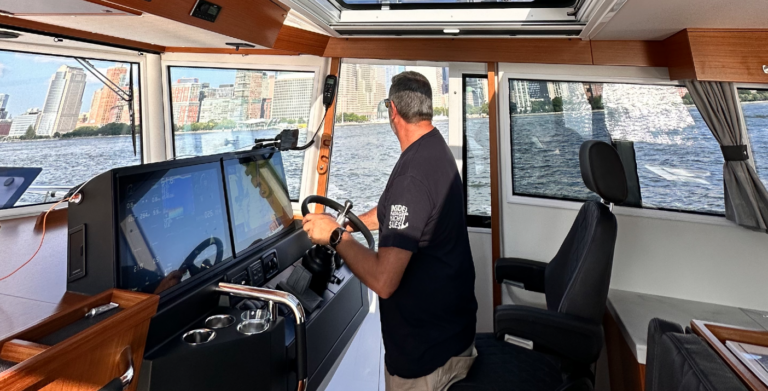
If you’re like most cruisers, you’d like to be able to watch television while under way or at anchor using one of the major satellite networks—DirecTV or Dish, for instance. Many folks fall into a familiar routine of watching the news over a cup of coffee in the morning or a current-events program on Sunday evenings. Taking this capability to sea with you only enhances these experiences. Additionally, in our communication- and information-intensive society, you’d also like to stay in touch with family or business associates via voice, email, and maybe even fax, while you are cruising. Finally, you think, it sure would be nice to have a high-speed Internet connection while you are away from home, for everything from the latest weather forecasts and repair facility details to technical information on equipment and stock market reports and, of course, just plain Web surfing. All this capability will, you’d assume, require a host of different products from myriad manufacturers and service providers using a sea of antennas, if it’s even possible at all, right? If you made this assumption, you’d be dead wrong. A company called KVH provides all of these capabilities—and one-stop shopping for the various service providers—using just two antennas.
It All Started On a Summer Day In 1978
Arent Kits van Heyningen (his initials became the genesis for the company name, KVH) was born in Holland in 1916. He served briefly in the Dutch army at the start of WWII, until it was disbanded after the Germans overran Holland. At that point he became a member of the famed underground; his specialty was blowing up bridges. Kits van Heyningen was once stopped by a German army officer on a train and eyed suspiciously. After checking his identity papers, the officer told him to get off at the next stop because the Gestapo would be boarding the train at the following city—the officer must have known they were looking for Kits van Heyningen. Kits van Heyningen chalked up this life-saving stroke of good luck to the fact that many old-school German army officers disliked the Gestapo and its methods. It’s interesting to think how different the recreational marine electronics world might have been had that officer not checked Kits van Heyningen’s papers, a clear example of the Butterfly Effect for us cruisers. After the war, Kits van Heyningen immigrated to the U.K., then to Canada, and finally to the United States.
Kits van Heyningen, an avid sailor/racer, scientist, and inventor, is also a classically trained problem solver: He sees a problem or need for a product and then sets out to solve or fulfill it, using his engineering background and ingenuity. His technical philosophy is, “First, set down what you need; requirements are the father of invention.”
In 1978, during the heyday of the America’s Cup Race, when the Americans were still the undisputed masters of this event, the skipper of the French entry ran into Kits van Heyningen’s son Martin, who was working in a Newport, Rhode Island, boatyard between semesters at Yale. The skipper, Johann Valentine, a fellow Dutchman, asked Martin what his father did for a living. When Martin responded, “he builds computers,” Johann immediately asked if the elder Kits van Heyningen could build a performance computer for his boat, France 3. Without checking with his father, Martin responded in the affirmative, saying, “My father can make anything.” Although there may have been some component of youthful exuberance and paternal admiration on Martin’s part, in this case, he was right. Using his talents as an engineer and inventor, Kits van Heyningen did indeed build the first tactical sailing performance computer, which crunched numbers based on wind speed, wind direction, and boat speed. Although the computer worked perfectly, it wasn’t used in the race. Once Dennis Conner and the American team heard about the computer and how well it worked, they protested, citing a rule that stated that the competing vessel and all of its systems had to be built in the vessel’s country of origin. (France 3 was eliminated during the trials, and Conner did eventually use a KVH sailing computer in a subsequent America’s Cup Race. He won.)
From the sailing computer was spawned the idea for additional product development in the form of a digital compass. Although the sailing computer worked well, it could not recognize or use the true direction of the wind or the vessel. Electronic compasses at that time were analog, while computers were and still are digital; thus, the two were incompatible. Kits van Heyningen returned to his basement laboratory and, after nearly two years of work, produced the world’s first highly accurate, self-calibrating digital compass.
Kits van Heyningen took the idea to his employer at the time, a large government defense contractor, to see if the company was interested. It wasn’t, so he and his two sons, Martin (Martin wrote the business plan for KVH while an undergraduate at Yale) and Robert, started KVH and began manufacturing and marketing the product from the basement of the family home. They shipped their first commercial product in 1982. The current version of that product—the Azimuth 1000 digital compass—remains to this day one of KVH’s premier products.
Kits van Heyningen and his sons believed that, in addition to the recreational and commercial marine community, the United States military would also make an excellent customer for the digital compass. (History has proved them right.) They were able to obtain enough research money from Uncle Sam to create an unusually large engineering department, which worked under Kits van Heyningen’s direct supervision. The results were, predictably, an innovative line of products that sold well to maritime and eventually other communities, both civilian and military. Kits van Heyningen’s business philosophy is as practical as his technical philosophy: “Once people start buying your product, if you treat your customers well, if you admit when you screw up, and if you correct your mistakes, you will live forever.”
Although it may be apocryphal, the story behind KVH’s first serious military sales contract goes something like this. During a joint U.S./NATO amphibious exercise in Norway, a U.S. Marine took a KVH fluxgate compass from his own private boat and installed it on the landing craft from which his unit was operating. When the exercise was over, the Marine was singled out for his unit’s exemplary performance. When he was asked to explain the prowess of his amphibious unit, he showed the brass the KVH compass. Suitably impressed, they eventually ordered a considerable number of the compasses from the small Rhode Island company that began in the Kits van Heyningens’ basement. The first Gulf War in 1991 helped to put KVH more squarely on the military’s map; its products were rugged and performed well in the harsh desert environment.
KVH also prospered in the recreational marine market. The fluxgate compass became the standard for virtually any other manufacturer’s product that required heading information, particularly autopilots. For a time, KVH made fluxgate compasses for all of the major autopilot and sailing instrument manufacturers. Early units, some of which I still come across in the boatyard (all are operational, even if the equipment to which they are attached is not), were manufactured in the Kits van Heyningens’ basement and were housed in sections of ordinary PVC pipe obtained from the local Middletown, Rhode Island, plumber’s-supply house.
In 1996, KVH went public (traded on the NASDAQ under the symbol “KVHI”). The business has grown steadily, with the elder Kits van Heyningen at the helm as chairman of the board and chief scientist, and sons Martin and Robert overseeing the business and engineering sides of the company, respectively. In 1988, the company had 24employees; it now employs approximately 270people in three locations, with 2004 revenues of approximately $62 million. The Kits van Heyningen family has hardly looked back since that summer day in 1978 when Martin proclaimed, “My father can build anything.”
Visiting KVH Headquarters In Middletown, Rhode Island
I landed at Rhode Island’s T.F. Green (PVD) Airport on a day that—even by Virginia standards—was brutally hot. My assignment, a choice one for a gearhead like me, was to visit and learn all I could about KVH, the premier manufacturer of satellite television and communication equipment as well as a host of other civilian and military navigation and stabilization products. Ian Palmer, KVH’s executive vice president for satellite sales, summed it up when he answered my question, what does KVH do? “We point things, very accurately.” In touring the research, engineering, and administrative offices as well as the satellite television receiver assembly line housed in KVH’s attractive, modern, 80,000–sq. ft. facility (they own this building along with two other facilities), I would find just how true this statement was.
The atmosphere was relaxed and comfortable; the uniform of the day appeared to be khakis and polo shirts. But there was a sense of urgency and enthusiasm about the work being done. It reminded me of the feeling one gets in the presence of a successful athletic team. These folks are good at what they do—they’re at the top of their game, and they know it, yet they are professionally humble about this success.
The Middletown facility—KVH’s corporate headquarters—houses a series of research laboratories, where the latest satellite television and communication gear is developed and tested. However, unlike many other high-tech electronics operations, most of the products are not manufactured overseas once the design is perfected. They’re built right here under the same roof by Rhode Islanders. I inquired about this—wouldn’t it be cheaper to do the design work here but build the product in the Far East, like so many other manufacturers are now doing? To paraphrase the reply: cheaper, perhaps, but not necessarily better, and KVH has no plans at this time to move the manufacture of its satellite television system out of this building.
The advantage of this manufacturing technique is that it offers unprecedented access to, and communication between, the engineers and the folks assembling the product. The engineer who designed the product can walk out to the assembly line and watch as it is manufactured, and is readily available to be consulted if a problem with an assembly technique arises. The high quality of the finished product, along with an exceptionally low warranty and return rate, would seem to indicate that this is a formula not to be trifled with. Some of the same folks, many of them women, have worked on this assembly line for 15 years. They know what they are doing, and they are clearly proud of what they do.
The Middletown facility is one of three operated by KVH. (They also have a 30,000–sq. ft. distribution center located near the main complex in Middletown.) The other two facilities are in Tinley Park, Illinois, and Kokkedal, Denmark, and are 25,000 and 30,000 sq. ft., respectively. The Illinois facility specializes in KVH’s fiber optics work, a field KVH entered in 1996, developing and building FOGs (fiber optic gyros) as well as KVH’s line of military navigation gear, known as TACNAV. The Danish facility is KVH’s European sales, marketing, and technical support hub.
The Rhode Island facility clearly revolves around KVH’s core business—stabilized satellite television reception for marine and automotive applications—a field it entered in 1994. Since that time, KVH has continuously led the way, developing and improving the system that is now so familiar not only to boaters, but also to owners of RVs and now SUVs and minivans. KVH’s newest mobile satellite receiver, the TracVision A5 (the antenna is low profile, not much bigger than a plastic trash can lid), designed for SUVs and minivans, will interface with existing video systems in these vehicles, offering live satellite television content while on the road. Since it entered this business just over a decade ago, KVH has manufactured over 75,000 mobile (marine and automotive) satellite television receiving systems, all of which have been built at the Rhode Island facility.
KVH currently employs approximately 270 people, roughly 200 of whom work at the Rhode Island facility. It was refreshing to discover that 75 percent of KVH’s business is civilian sales, mainly of satellite and digital compass systems, with the remaining 25 percent going to government and military products. I’m as patriotic as any American, but when I’ve had to deal with manufacturers in the marine industry whose core business is government and military sales—with civilian products being treated as an aside—I have often found the quality of customer service lacking. Not so with the folks at KVH. They know who butters their bread: the recreational and commercial mariner, and now the workaday motorist, as well. The KVH staff are justifiably proud of the work they do for the military. The products are of the highest quality and have, no doubt, saved the lives of countless American and allied soldiers, sailors, airmen, and marines. But defense work doesn’t constitute the majority of what they do, and they aren’t ashamed of that.
KVH practices, as many efficient companies now do, a system know as lean manufacturing: it doesn’t keep a lot of stock stacked up in a warehouse. That’s inefficient and old school. Instead, it aims to fulfill orders within 24–48 hours, and it succeeds, meeting this goal 97 percent of the time. As I was escorted by Ian Palmer and Chris Watson, KVH’s corporate communications manager, through the satellite television antenna assembly line, there appeared to be an easy working relationship between the executives and the assemblers of these precision products. Many of KVH’s employees, in all departments—not just the assembly line—have been with the company for well over a decade.
In keeping with its “all under one roof” philosophy, KVH operates its own in-house graphic design team, which is made up of a group of six women. Everything KVH produces in the way of literature, from major advertising campaigns (including the ads in PMM) to technical manuals, videos, labels, and website content, passes through this office. As someone who has installed and serviced KVH products, I can attest to the high quality and readability of the company’s technical literature, and I’m not alone in this opinion. The Society of Technical Communication agrees; it recently bestowed upon KVH a “Best of Show” award for one of its satellite television literature products.
In my capacity as a boatyard manager and technical editor, I am frequently called on to assist customers and readers (often over the telephone) with technical problems they are facing. As a result of this experience, I have a special appreciation for folks who also do this on a full-time basis. KVH’s technical support room buzzed with the conversations of half a dozen operator/technicians who were providing technical assistance to users—consumers and professionals alike—of all types of KVH products around the world. KVH offers telephone support six days a week for North and South America, Australasia, Europe, the Middle East, and Africa via United States and European phone numbers and time zones. Email support is available through an FAQ section 24/7 and via technicians during normal working hours. This is a unique (and no doubt costly) service that KVH offers, but one that elicits my respect and admiration. I’ve often said that regardless of how well a product is engineered and built, I’m not interested in it if it’s not well supported. Based on my experience and on what I observed in the technical support center, KVH products are well supported, indeed.
Along those same lines, KVH recognizes that the major satellite television providers may not be aware of the peculiar requirements of maritime users. (KVH is one of DirecTV’s top 150 accounts, but maritime users make up an infinitesimally small fraction of satellite television accounts—30,000 maritime users versus 14 million home subscribers.) So KVH created its own activation department and liaison center to allow users of KVH satellite television reception equipment to call on KVH to activate their service. KVH’s activation office will even arrange three-way conference calls among the customer, the satellite provider, and a KVH employee. Details such as mirror service (certain satellite providers will allow you to mirror the service you have at home on your boat for an additional $5 per month), local versus distant network reception, and New York and Los Angeles network reception can be ironed out with the help of the KVH activation office. If you have an activation or service availability question, call or email KVH’s activation department.
Products
KVH is diverse indeed, offering a dizzying array of hardware, software, accessories, technical know-how, and other products. In fact, there’s too much in the way of gear and capabilities to list in the space available. But I’ll touch on a few of the highlights.
TracVision, of course, is one of KVH’s flagship products. Offered in a range of antenna sizes, from the diminutive C3, which measures just 14.5 inches tall, to the substantial G8, nearly 40 inches tall—all of these antennas take the form of the now-familiar white dome with gray base—TracVision enables you to watch CSI Files or an HBO movie while anchored in a secluded cove in Nova Scotia, the Bahamas, or the San Juan Islands. Folks considering this system often ask me why they would need anything other than the smallest antenna. In simple terms, the larger the antenna, the farther afield you can travel while still receiving a usable signal. Think of the antenna as a net that’s catching, collecting, and concentrating the comparatively weak satellite signal—the larger the net, the more of the signal that can be accumulated and used. If you are staying close to shore and not venturing to the fringes of your satellite provider’s coverage area, then the smaller antenna usually works just fine. If you are headed well offshore or to fringe areas, plan on a larger antenna package. As a rule of thumb, the antenna you choose should not be any smaller than the smallest land-based antennas used in the area you are cruising for the same satellite provider.
Once you have one of these systems and it’s delivering crystal-clear television signals (it handles HDTV too), it’s easy to take for granted how difficult it is to design and build a product such as this—and have it work reliably and successfully in a harsh marine environment. The antenna must remain pointed at the satellite, within 1–2 degrees of its position in the sky. (The satellite is orbiting roughly 22,000 miles above the earth in what’s called a geosynchronous orbit, which means it doesn’t move in relation to the ground beneath it.) If you’ve ever had to adjust your own home-based satellite antenna, then you have an appreciation of just how fine the increments of adjustment are. While that sounds like a tall order in and of itself, consider this: The satellite is no bigger than an SUV, presenting a small target, indeed. KVH guarantees that the onboard antenna will maintain its lock on the satellite in virtually any sea state. (You probably will want to stop watching television long before the antenna can no longer track the satellite.) The software and hardware required to keep a satellite receiving dish pointed at the satellite under these conditions are formidable: multi-axis, lightning fast, high-torque motors, and the brains to tell them what to do and when to do it.
KVH’s companion communication product, called TracPhone, provides the user with several options, from simple voice communication to fax, email, and high-speed Internet access. Again, the size of the antenna plays a part in its performance. While TracPhone has near-worldwide capability (the satellite system it is able to use, Inmarsat, isn’t limited to continental target areas like those of satellite television services), the larger the antenna, the greater the data transfer rate. Although all the intricacies of TracPhone can’t be discussed here, in brief, its antennas are available in a series of sizes that match those of TracVision antennas, in the matching white dome with gray base. The Internet download speeds available with KVH’s premier TracPhone system are impressive in their own right (256–320 Kbps using KVH’s proprietary Velocity Acceleration software), considering access is available nearly anywhere in the world, no matter the time of day or night.
As mentioned earlier, KVH continues to offer a digital compass, the Azimuth 1000 in both en-bloc and remote-sensor designs. The latter can be particularly useful in smaller vessels where the compass display is too close to accuracy-degrading ferrous masses or magnets. (Audio speakers are notorious for playing havoc with magnetic compasses, a problem I’ve solved on more than one occasion using the remote-sensor digital compass.) Additionally, KVH offers an economical digital GyroTrac compass for recreational and commercial vessels, which uses a digital magnetic compass combined with a stabilizing three-axis gyro sensor. The result is a digital compass with gyro-like performance, at a fraction of a conventional gyroscope’s cost.
KVH’s military products are a glimpse into the future of navigation. The TACNAV system offers highly accurate, integrated GPS navigation to HMMWVs and armored vehicles. Its most interesting feature is its ability to switch to a “dead reckoning” mode in the event the GPS signal is lost or jammed. Following Operation Iraqi Freedom, one commander of a Bradley Fighting Vehicle proclaimed of KVH’s TACNAV, “From the berm to Baghdad, it was the best piece of equipment on the Bradley.” KVH also manufactures other navigation systems that make use of its fiber optic gyro, for everything from torpedoes to remotely operated autonomous vehicles.
KVH combines the service and work ethic of a family-run business (Arent Kits van Heyningen still goes to work every day) with the resources of a formidable cutting-edge technology company. I met with the elder Kits van Heyningen briefly during my visit—his office had that “inventor’s” look about it, the desk strewn with papers and charts, along with a slide rule and a steaming cup of coffee. Much like the innovative products they build, KVH as a company may be small, but it is accurate and quick to react to the needs of the recreational and commercial marine marketplace.
Visit the company’s website at kvh.com, send them an email message at [email protected]This e-mail address is being protected from spambots. You need JavaScript enabled to view it , or call 401.847.3327.
Steve D’Antonio is PMM’s Technical Editor and the VP of operations for Zimmerman Marine, a custom boatbuilder and full-service repair yard in Mathews, Virginia.
